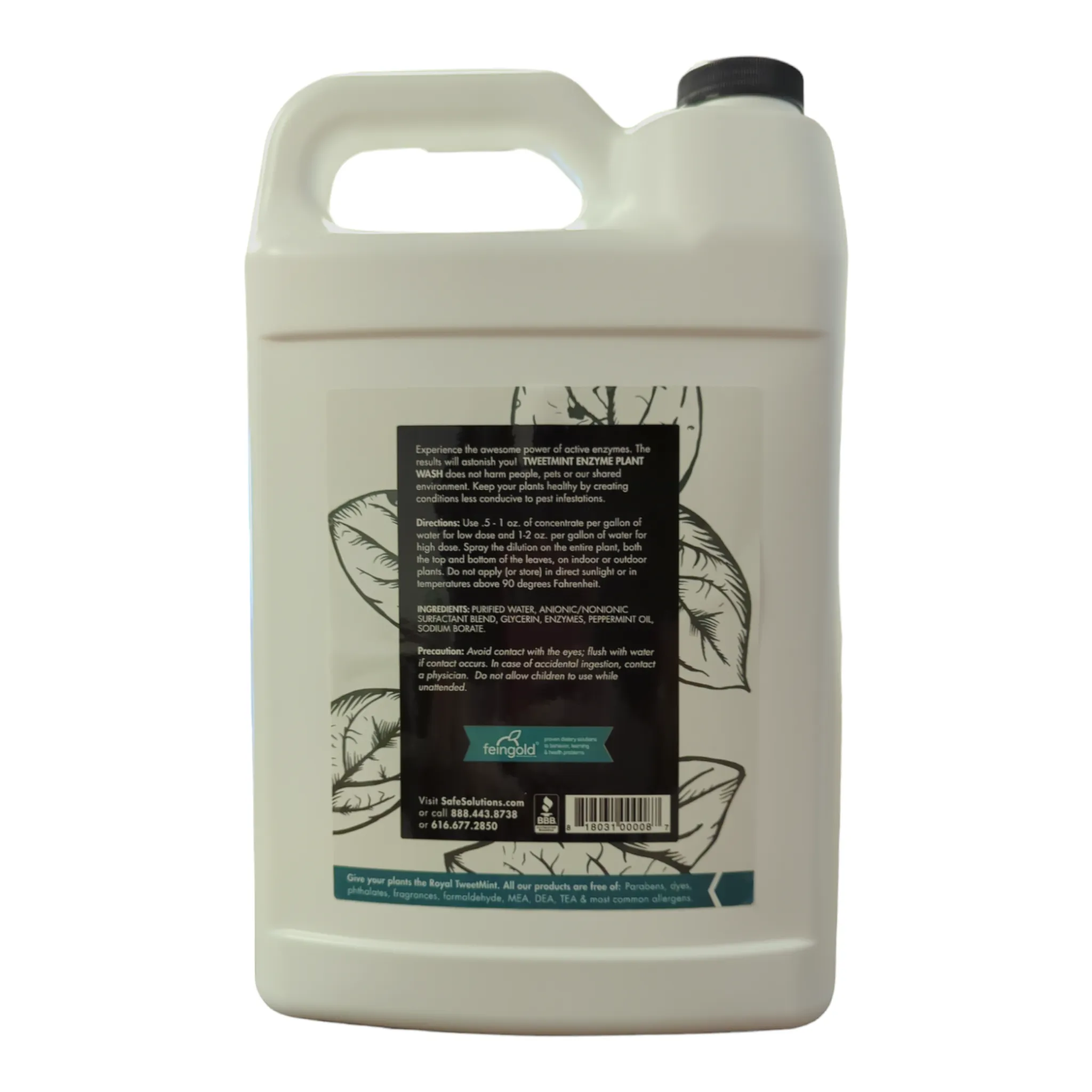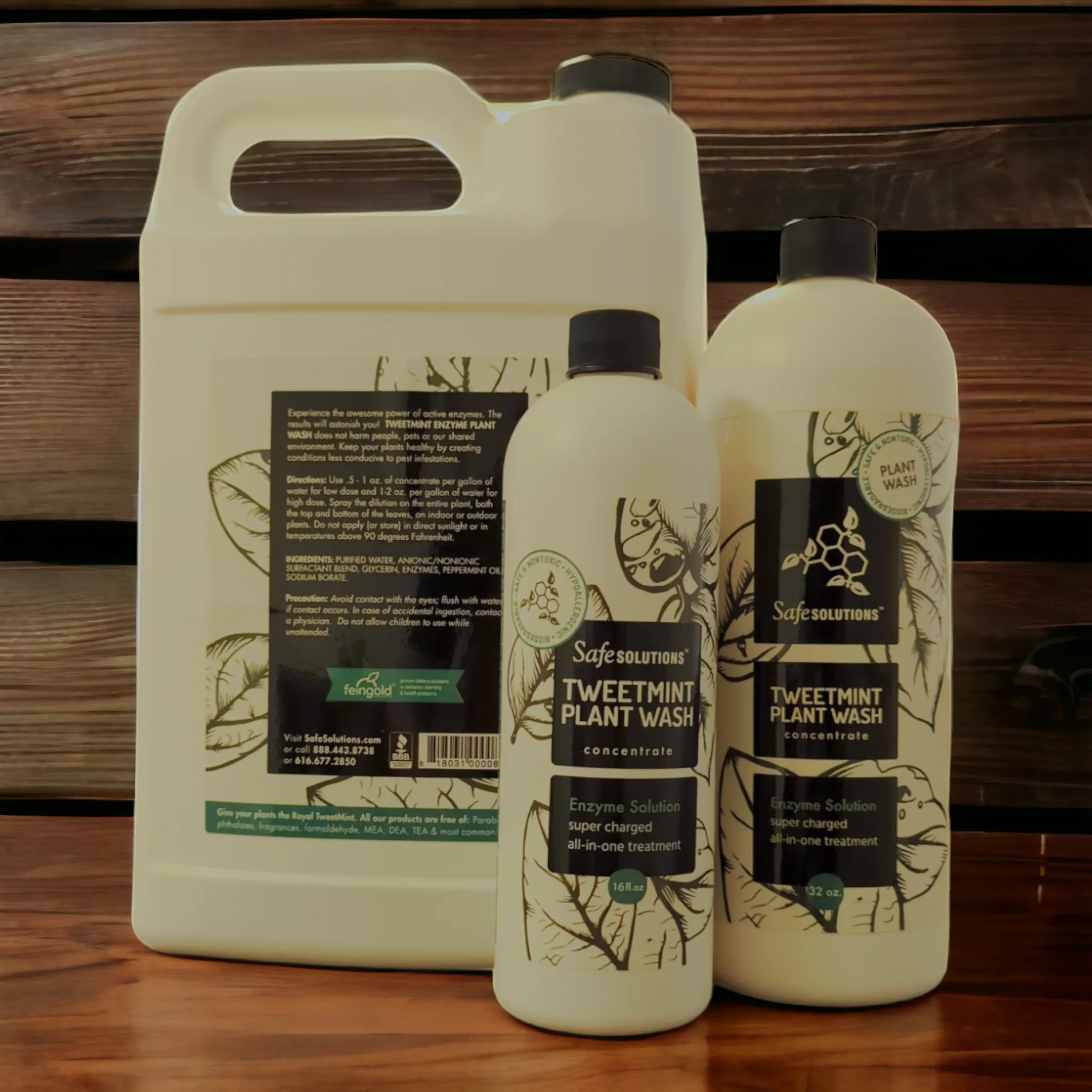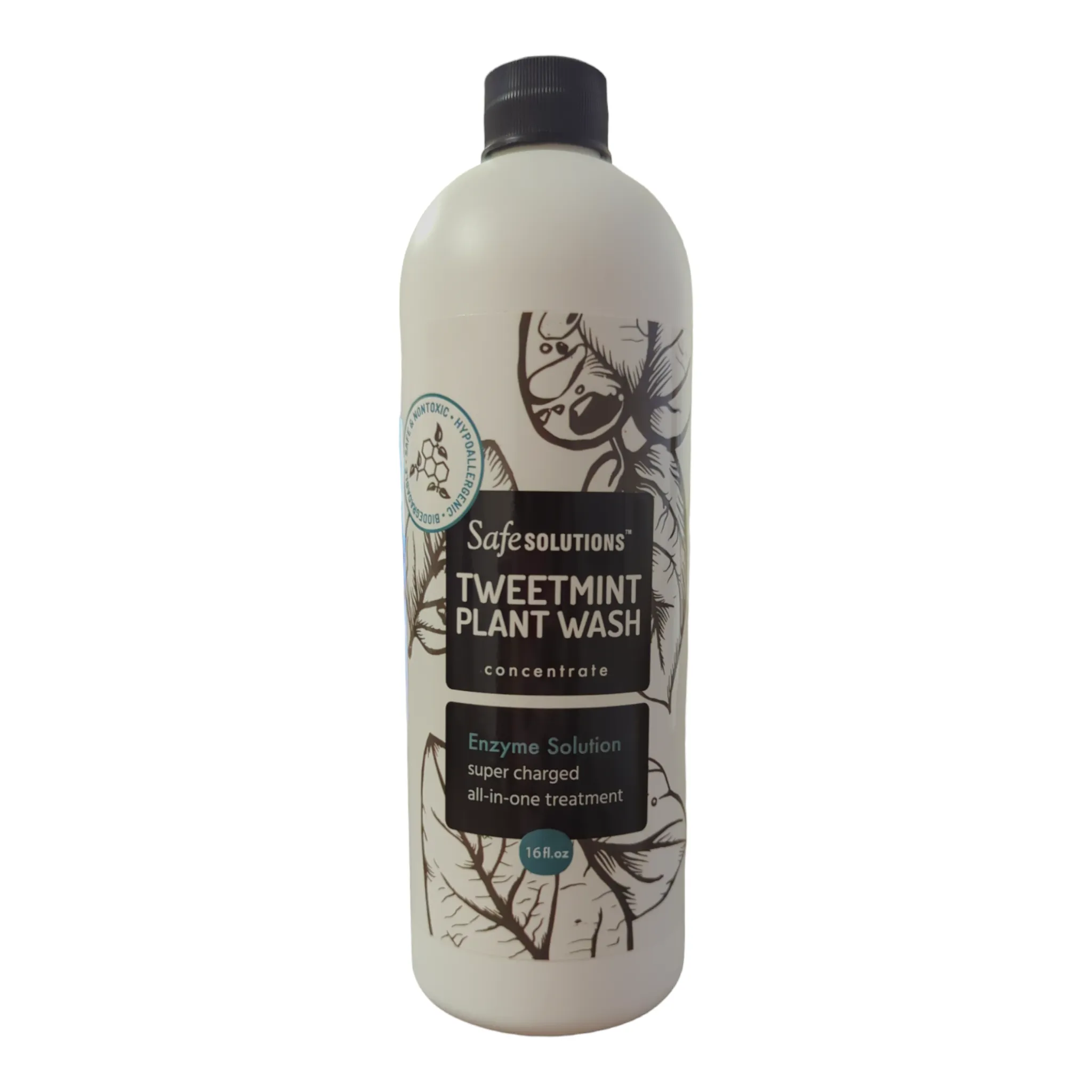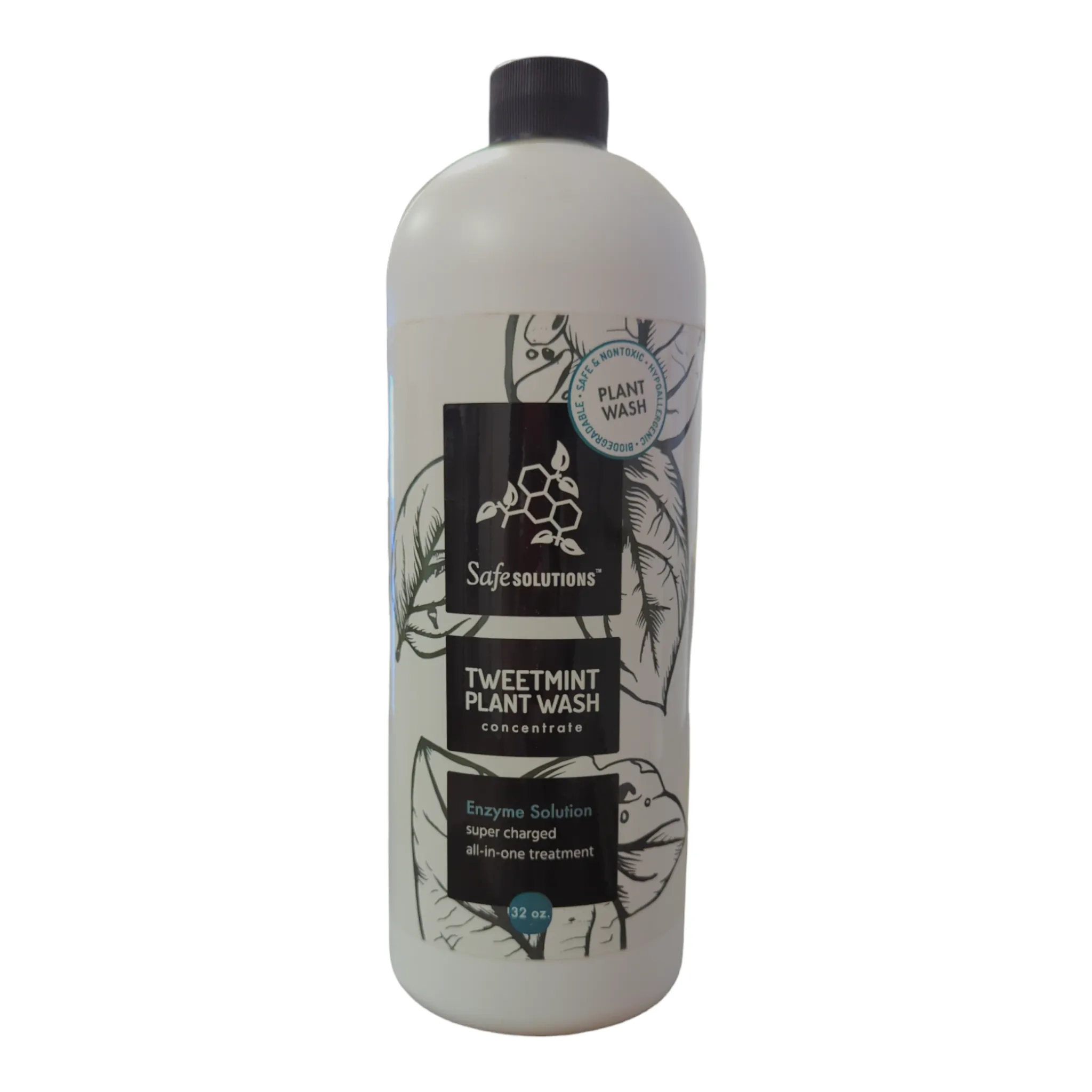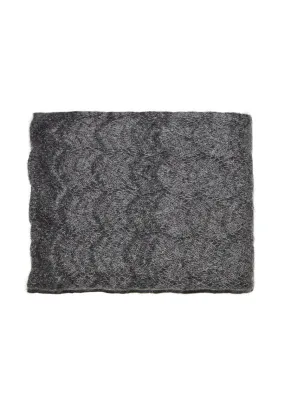TweetMint Enzyme Plant Wash is the perfect household cleaning companion; safe, nontoxic and strong enough for any task. It is biodegradable and will not contaminate people or environment. Experience the awesome power of all natural activated enzyme.
We were looking at enzyme cleaners for Pesticide use and came across this company along with all the TONS of free information that they publish. Because the IPM PDF they offer is so awesome we wanted to share it here with you:
Useful Info
(The statements expressed herein are the personal views of author Stephen L. Tvedten, and do not reflect those of Safe Solutions, Inc. and are for informational purposes only)
Pest control expert Stephen Tvedten has and the process of using enzyme compounds as biological pesticides to achieve safe, nontoxic control of insects. Tvedten's has 77 claims on the process of using various surfactant formulas and enzyme compositions to control a broad array of pests such as insects, arachnids, bacteria, viruses, and mold. The protects the use of enzyme-based compounds as a nontoxic alternative to pesticide for controlling insects and arachnids.
In IPM encyclopedia, Stephen Tvedten outlines how through years of pest control field research he has developed the use of enzyme as a natural source of pest control. He has consistently proven that enzymes make an outstanding alternative to using synthetic pesticide poisons. Pesticides are persistent and pervasively poisonous, harming not only insects, but also people and pets. Agriculture has waged a costly struggle fighting insects by constantly rotating obsolescent pesticides in a desperate strategy of chemical warfare. It is time to discover an alternative. Enzymes offer a non-toxic and safe solution to pest control, making them preferable to the health hazards of pesticides.
· Welcome to the cleaner future of pest control ·
How Enzyme Works
Insects make formidable opponents because they are protected by strong exoskeletons - hardened shells that cover them like a suit of armor and have the locomotion of a tank. It is the exoskeleton that has most challenged pest control - until now. Enzyme is the key.
Because an insect's exoskeleton is a hard shell made of non-living material, it does not grow in size with the insect's development. Therefore it is necessary for all insects to shed their exoskeletons several times during the course of their life. They accomplish this by using enzymes they create naturally to split open their exoskeleton and thus grow larger. It is during this molting phase that an insect is at its most vulnerable - susceptible to drying out or drowning since the hard shell that normally would protect them has been cast off.
The surface of every insect's exoskeleton is covered with a waxy, water-repellant patina known as the cuticle. This outer coating protects the insect from harm, and has long been an obstacle for pesticide's effectiveness - the chemicals must penetrate the cuticle in order to affect the insect, so pesticides employ a variety of volatile solvents, toxic dusts or light oils in order to cut through the cuticle and thus deliver the poison into the insect interior.
The solution to cracking the cuticle of an insect's exoskeleton was discovered through the observation of insect entomology - insects employ enzymes to escape their exoskeletons. By utilizing cultured enzymes that mimic those found in nature, a natural form of biological pesticide can be produced that has the ability to dismantle the armor of an insect instantly.
digests insect's waxy cuticle on contact and dismantles their exoskeleton - effectively forcing insects into immediate molting in which the protective shell is stripped.
Using enzyme-based formulas as a form of biological pest control is an ingenious play of engaging the forces of nature to our advantage. Enzymes exist throughout the insect, plant and animal kingdoms to aid in the digestion of organic matter. Arachnids such as spiders and scorpions inject their prey with enzyme; insect larvae (maggots) also rely on enzymes to predigest their food for them. Insectivore plants also use enzymes to digest insect prey. Even cellular organisms such as bacteria, mold, mildew and yeasts all depend on enzymes to aid in the external digestion of food sources. Enzymes play a fundamental role to all life because they are a necessary catalyst to speed up the chemical reaction of metabolism. Enzymes are used by living beings to break down complex structures in food digestion.
Enzymes are used throughout the food industry to pre-digest proteins and starches: baby food manufacturers add enzymes to soften the food, bakers add protease enzyme to flour to lower protein level, and brewers add enzymes to beer during fermentation to help filter and clarify the beer. Cheese makers as well use enzymes in the ripening phase of cheese.
Why Use Enzyme
Enzyme control of insects is preferable to traditional pesticide-based approaches to pest control for several reasons, not least of which is the elimination of chemical exposure risk.
Enzyme control is non-toxic and safe for people and the environment, pesticides are not. Enzyme is a desirable alternative to pesticide control because it relies on physical biology rather than on toxic substances to achieve success. Enzyme control is universal in range - all insects are affected by enzyme - enzyme works for any pest problem encountered.
Unlike pesticides, enzyme can be adjusted in strength, allowing specific insect species to be targeted or spared according to intent. For example, one can treat an organic garden with a weak concentration in order to eliminate aphids but protect beneficial honey bees.
Unlike pesticides, enzyme control will never become obsolete. Because the biology of insects depends on the creation of enzymes in order for survival, it is impossible for insects to develop a resistance to enzyme as a method of pest control. Insects have an ability to rapidly evolve an immunity or resistance to commercial pesticides within a short time, even within a single crop cycle! This leads to a costly rotation of chemical warfare. Sadly, human beings do not have the biological tolerance to the persistent pollution of pesticides that insects do, and are often the ultimate victims of pesticide. Fortunately a consistently reliable and safe solution to pest control has been discovered - enzyme.
Enzyme control achieves safer, faster and more effective results than pesticide poisons. Replace the health risk of outdated chemical pesticides with a sure-fire and completely non-toxic alternative method for exterminating pests - .
Pest Control has long sought the perfect pesticide, an idealHoly Grail that is totally safe for humans, yet certain death to insects, and would never become obsolete. Why this had not been found was due to a lack of exploring outside the realm of traditional pesticides - which rely solely on the application of hazardous chemical poisons to kill insects. Enzyme based biological pesticides offer just such a perfect resource for non-toxic pest control.
Enzyme Pest Control
Safe Solutions controls pests such as insects, bacteria, mildew and mold. The enzymes used in the formula exhibit the same properties as those that occur naturally in all insect species - causing a digestive disintegration of the exoskeleton. When enzyme makes contact with an insect, it quickly digests its exoskeleton resulting in prompt death. This process does not harm human skin and is 100% safe, non-toxic and hypoallergenic.
The ingredients of are recognized as Non-Toxic, Food Grade, or GRAS (Generally Recognized As Safe) and are pH balanced, hypoallergenic & biodegradable.
is a valuable alternative to using pesticide in situations where there are chemically-sensitive people such as those who are pregnant, infants, elderly, ill or MCS.
Typically, a dilution of 2 to 4 oz. concentrate per gallon of water will kill most any insect in several seconds. Arachnids such as spiders and ticks have stronger exoskeletons than arthropods and may take several minutes to succumb to the enzyme. When spraying outdoors a dilution of ½to 1 oz. per gallon of water is a better solution so that collateral damage to beneficial insects is prevented. This solution works well for organic gardening / farming or as a drench for ant or yellow jacket nests.
The dilution rate of the enzyme concentrate can be calibrated to affect only specific target species but weak enough to protect beneficial insects such as honey bees. For example, a dilution of 1 oz. per 5 gallons of water can be used in organic gardening to remove softer-bodied aphids, but will not harm beneficial insects such as honey bees. Start with a weak dilution and increase concentration until the target insect is pinpointed.
Indoors, is fantastic for washing floors and furniture, laundry and linens, tub and tile to remove them not only of stubborn stains but also prevent insect invaders.
Outdoors, is great for organic gardening, landscaping, and lawn care. It is non-toxic and biodegradable, so it can be fogged or sprayed onto vegetables, fruit trees, orchards, crops and lake or pond water restoration without fear of contamination.
Caution: Safe Solutions Enzyme Plant Wash is a broad-range bio-pesticide and will kill all insects including beneficials, so use them outdoors with great discretion!
* Safe Solutions is currently seeking to register their with the EPA as a bio-insecticide. Official pesticidal claims cannot be made until it is registered with EPA.
Because commercial pesticides are comprised of chemicals which are volatile, synthetic and poisonous, the EPA prohibits registered pesticides from claiming they are either safe or non-toxic. However, since Safe Solutions is in fact a natural biological pesticide that affects insects based on physical rather than chemical properties, it is better to refer to it as a Pestisafe® rather than as a pesticide.
Be aware that not all enzyme cleaners are safe to use for non-toxic pest control, most are not designed for this purpose and many are toxic such as those purchased at swimming pool supplies or janitorial supplies, e.g. drain openers and septic tank treatment cleaners. Other biological detergents available on the market are not manufactured for pest control. Only Safe Solutions is patented for the purpose of non-toxic pest control.
Summary of Patent
Pesticides present risks to human health. Although the rate of post-application degradation may vary widely, almost all pesticides present some direct risk to human health through residual toxicity, i.e. direct human contact with pesticide residues remaining after treatment, whether through inhalation of volatile toxic vapors, skin contact and transdermal absorption, or ingestion. In addition, many pesticides present indirect risks to human health in the form of environmental pollution, most notably pollution with persistent, halide-substituted organics which accumulate in the fat stores of food fish and other animals. These problems have led to complete bans on the use of some pesticides (e.g., DDT, chlordane, heptachlor, aldrin, and dieldrin); while the continued use of the remaining pesticides has produced a new problem: the increasing development of widespread resistance to pesticides in insects.
This resistance yields two results: 1) quick reinfestation by the pest insect; 2) the need and cost of continually engineering new pesticides (e.g., synthetic pyrethroids were developed because of resistance to the less toxic first generation pyrethrins). New pesticide production takes time and the new pesticides that result are almost universally more expensive than those they replace.
In this context, traditional pesticides are applied on a regular, and typically increasing, basis. For example, many schools have come to be sprayed monthly or even biweekly, and with increasing quantities of pesticides to combat endemic roach re-infestations, often to no avail. This intensifies the problem of residual toxicity to people, especially to children who, as a result, may suffer headaches, grogginess, nausea, dizziness, irritability, frenetic behavior, and an impaired readiness to learn.
Because of these effects, it has been recognized that totally new approaches must be discovered and implemented in order to effectively control invertebrate pests without destroying human health and the environment. There is a need for a quick-acting, effective, residually non-toxic method for combating insect, arachnid, and other pests which may be used as a replacement for traditional pesticide treatments and as a supplement to the arsenal of currently available IPM techniques.
Consequently, it is an object of the present invention to provide a method for combating invertebrate (i.e. insect and arachnid) and microbe (i.e. bacterial, algal, fungal, and/or viral) pests which is quick-acting, effective, and residually non-toxic and which may be used as a replacement for traditional pesticide treatments and as a supplement to the arsenal of currently available integrated pest management techniques.
It has been surprisingly found that the application of a composition comprising at least one protease enzyme is a method for exterminating pests which achieves these objectives. The enzyme component of the invention may comprise a single protease or a protease-containing mixture of enzymes, whether natural, preformed, or synthetic. In an alternate embodiment, the composition may also comprise a detergent component. This detergent component comprises one or more surfactant(s), detergent builder(s), or mixtures thereof.
(Safe Solutions, Inc. does not make pesticidal claims regarding its )




